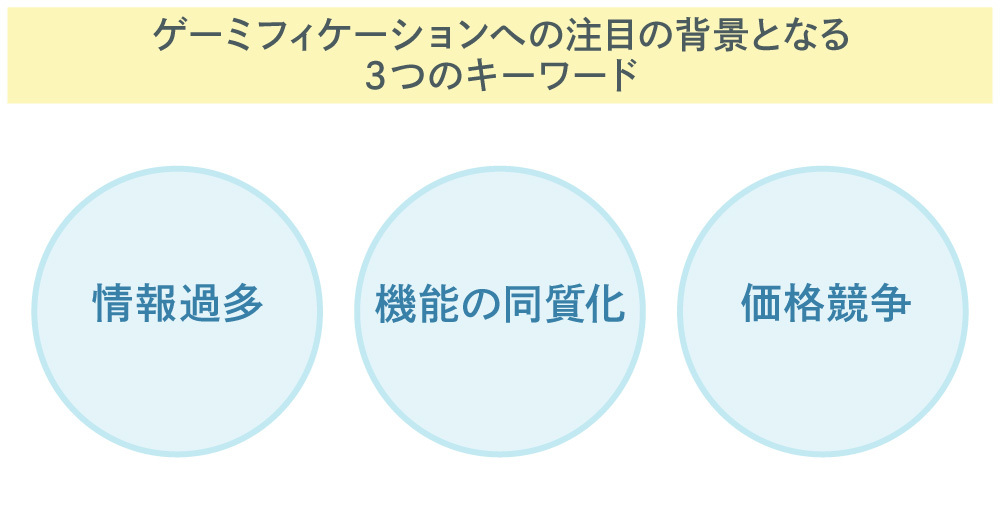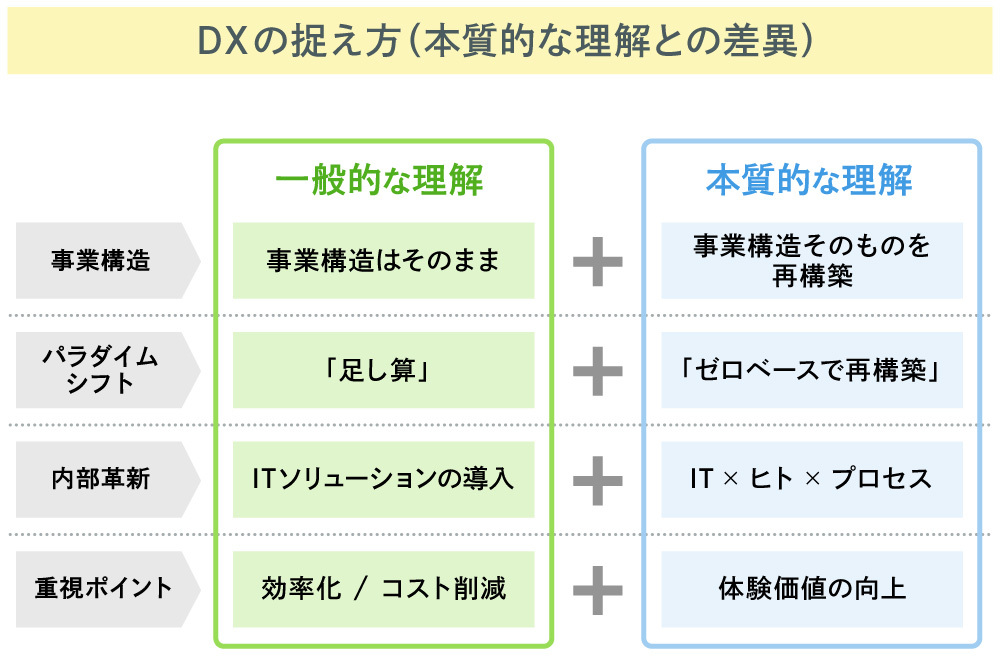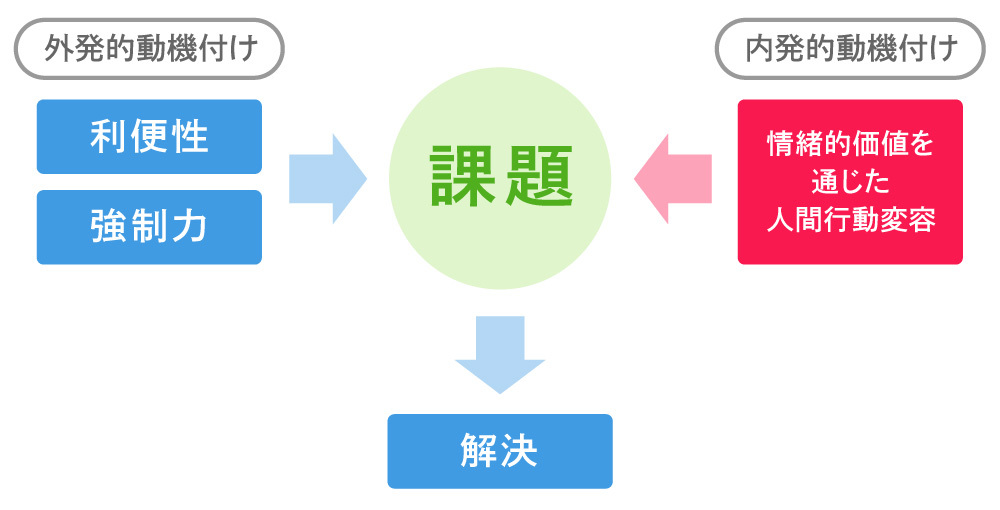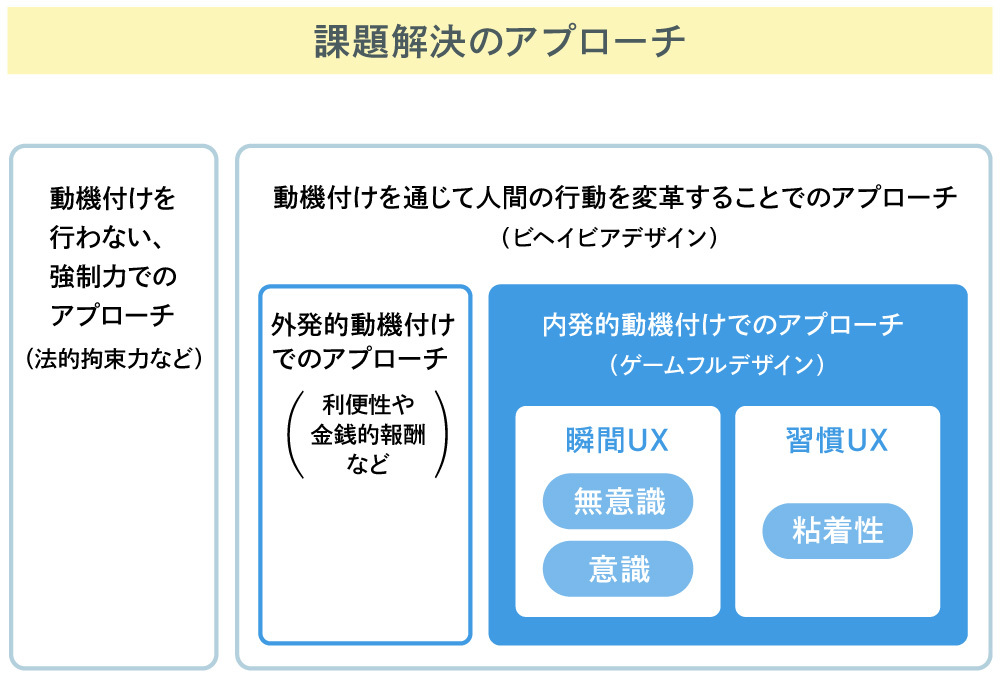Note: This website was automatically translated, so some terms or nuances may not be completely accurate.
The True DX Begins Now! The Key is "Gamification"

Masato Ito
SEGA XD CO., LTD.
Hasn't everyone experienced the magic of "games" at least once?
Games transport us to another world. They are filled with opportunities to challenge ourselves beyond our limits. This approach of applying the immersive power of games to non-gaming fields is called "gamification." Precisely because modern society is overflowing with challenges that cannot be solved by conventional methods, the "power of games" is gaining attention as a means to solve problems.
This article introduces the concept of gamification and the new value and benefits its technology brings to the DX domain. Furthermore, SEGA XD CO., LTD. Director, Executive Officer, and COO Masato Ito will explain "Gameful Design," a design methodology developed by SEGA XD CO., LTD. based on intrinsic motivation, creating experiences that make you "just want to do it."
Why doesn't "true DX" progress just by introducing tools?
DX (Digital Transformation) accelerated rapidly across industries starting around 2020. However, we often hear from companies that while they've implemented digital solutions and tools, they aren't being effectively utilized.
For example, consider a case involving the introduction of a "sales tool." A company analyzed its sales data and introduced a tool for its sales team to improve performance. However, due to human (psychological) reasons like finding daily sales progress input "tedious," issues arose: entries were missed, or while entries were made, the information provided was insufficient.
This prevents the collection of primary data, ultimately failing to achieve the goal of advancing sales analysis.
The challenge in advancing DX often lies with "people." Simply introducing tools does not bring about transformation. Humans are sometimes irrational creatures; even when they intellectually understand they "should use" something, they may "not use" it.
Even when highly functional tools are introduced, if the process is ultimately left to the frontline personnel, the "utilization" inherent in true DX often fails to progress. Instead, the effort remains stuck at the level of digitization.
To address this issue through a "conventional approach," it would be reasonable to encourage input by imposing rules like data entry quotas on sales members or offering monetary rewards upon achievement.
However, extrinsic motivation carries the risk of diminishing the intrinsic motivation of motivated members. Even members who originally possessed high aspirations and carried out daily sales activities can, when rewards are introduced, end up making the reward itself the goal.
In contrast, gamification solves this challenge by providing experiences that make sales members themselves want to use the sales tools proactively.
What is Gamification?
So, what exactly is this concept of "gamification"? Let's explore its history.
In 2011, the American IT advisory firm Gartner identified gamification as a trend for the next five years, defining it as:
"a broad trend of applying game mechanics to non-game contexts to increase user motivation and influence behavior."
This definition sparked market interest in leveraging game mechanics.
Well-known techniques include
- - The "mission" feature, which clearly states the tasks users should perform
- "Goals" that set targets for users to aim for
- and "rewards" that provide incentives when users complete required tasks.
These approaches leverage concepts commonly used in games.
However, back in 2011, when gamification was applied to various services using these "methodologies," it often failed to deliver the expected results.
The reason is likely that "games are fun because they have missions, not because they have rewards." In other words, what should be discussed based on the essential "fun experience" – like the worldview or story – was instead approached solely from the perspective of "ease of implementation," focusing only on the methodology. This resulted in the perception that "it's difficult to achieve results" becoming entrenched.
Over a decade later, gamification has recently regained attention. Three key factors underpin this resurgence: "information overload," "homogenization of features," and "price competition."

- Information overload: In today's world saturated with goods and information, where IT permeates everything, people are inundated with information.
- Homogenization of features: The pursuit of maximum performance across all products has led to similar functional values in goods and services.
- As a consequence, "price competition" where companies try to secure an advantage through pricing.
More and more products and services are inevitably driven by these forces.
In this environment, to get customers to choose and purchase based on factors beyond functionality or price, the importance of "non-functional value" – emotional value that creates a "can't help but want to do it" or "can't help but want to buy it" mindset – is growing significantly.

Gamification's "intrinsic motivation" drives DX where "people are the protagonists"
So, how does gamification's emotional value of "making people want to do it" contribute to the field of DX?
According to the definition published by Japan's Ministry of Economy, Trade and Industry (METI), "DX" means "establishing competitive advantage by transforming products, services, and business models based on customer and societal needs, while also transforming operations, organizations, processes, and corporate culture/climate, through the utilization of data and digital technology, enabling companies to respond to the rapid changes in the business environment."
It is not merely about introducing IT systems or tools; it signifies transforming the experiences of customers, employees, and society through the use of data and digital technology. The focus remains squarely on "people." Therefore, "enhancing experiential value" is a fundamental prerequisite.

When considering experiences that people "want to use" and "enhancing experiential value," games offer significant insights.
By harnessing the power of games—which captivate people regardless of personal gain—we can expect to accelerate the adoption of digital tools and encourage more proactive system usage.
The gamification approach—which transforms human behavior through intrinsic motivation via emotional value, rather than extrinsic drivers like convenience or coercion, thereby solving problems—is highly effective for adopting new tools like DX.

For the challenge of "sales representatives not entering records into sales tools," applying traditional "methodology-based" gamification could involve approaches like the following:
- Daily missions (such as data entry) are clearly communicated to employees.
- Visualize the monthly target number of entries
- Award badges (rewards) upon achieving monthly targets
While this approach may yield some results, it alone does not fully harness the power of gamification.
What constitutes effective experience design to more powerfully harness the motivational force inherent in games? What we explored and developed is the concept of "Gameful Design."
What is "Gameful Design," the experience design leveraging game elements that will gain attention?
"Gameful Design" is an experiential design approach within gamification (the application of game elements to non-game fields) that centers on fostering "positive intrinsic motivation."

The problem-solving approach through Gameful Design can be broadly categorized into two design methods: designing momentary experiences (Momentary UX) and designing habitual experiences (Habitual UX).

We further refine this intrinsic motivation into
- "can't help but do it" (unconscious)
- "Can't help but want to do it" (conscious)
- "Can't help but keep doing it" (stickiness)
We further categorize this intrinsic motivation into three types:

The "unconscious" moment UX is based on the concept of "nudges" (*1) proposed in behavioral economics, a discipline that reconstructs economics by observing human psychology and behavior to reveal their characteristics.
Meanwhile, "conscious" moment UX is based on the concept of "Trigger Science" (*2) developed by Professor Masahiro Matsumura of Osaka University's Graduate School of Economics. The final category, habitual experiences, refers to sticky experiences that make you "keep doing it."
※1 = Nudge Theory
A theoretical framework for promoting behavioral change without providing economic incentives or coercing actions
※2 = Trigger Science is
A discipline aiming to encourage conscious behavioral change by increasing the number of attractive behavioral options
How to design experiences that make people "keep doing it"?
Explaining the nine human desires classified by environmental and temporal axes
This time, we'll introduce how designing "habitual experiences" within this framework creates situations where people "just keep doing it."
To design experiences that make people want to act, we start from fundamental human desires. We define two main factors that trigger these desires: the "environment" axis and the "time" axis.
The environment axis is broadly divided into three categories: "Subject," "Situation," and "Object." "Subject" refers to desires triggered by oneself alone, "Situation" refers to desires triggered by the specific circumstances each person finds themselves in, and "Object" refers to desires triggered by things in one's immediate surroundings. While not strictly identical, think of them as akin to first-person, second-person, and third-person perspectives.
The other classification, based on the time axis, also divides desires into three categories: "Future," "Present," and "Past." Desires aroused by expectations or imaginations of what might happen in the future are classified as "Future." Those aroused by what is happening at the present moment are classified as "Present." Those aroused by phenomena or events that occurred in the past are classified as "Past." The following table defines desires using this 3×3 combination.

Gameful Design is the process of designing experiences that make people want to act, based on game principles, using these nine desires as axes. Applying this to the earlier example of introducing a sales tool, it looks like this:
● Achievement Desire (Subject × Future): People are motivated by a "sense of progress"
Experience Design Example: Set incremental goals and visualize daily progress toward them
● Curiosity (Situation × Future): People are motivated by "chance and curiosity"
Experience Design Example: Every 5 sales records entered unlocks a chance to spin a gacha, where digital items can be obtained
● Acquisition Motivation (Condition × Future): People are motivated by "scarcity"
Experience Design Example: Create a system where one person with outstanding sales record entries is praised daily
● Competence Need (Subject × Present): People are motivated by the feeling that they can (or are) exercising their "creativity"
Experience Design Example: Provide feedback from supervisors (or AI automation) based on the content of entered sales records
● Sensory Desire (Situation × Present): People are motivated by "non-thinking sensations"
Experience Design Example: The UX response on the input screen features pleasant effects
● Preservation Need (State × Present): People are motivated by "attachment" and "desire for consistency"
Experience Design Example: Daily sales record entries accumulate, with the current total displayed visually.
● Autonomy Needs (Subjectivity × Past): People are motivated when they can "personalize" matters
Experience Design Example: Defining "affiliation" by year of hire displays sales record input rates per group
● Relational Motivation (Situation × Past): People are motivated by "being aware of others."
Experience Design Example: A common goal is set for each "affiliation," and everyone works together toward achieving it; during this process, one's contribution is visualized.
● Avoidance Motivation (State × Past): People are motivated by "avoiding loss"
Experience Design Example: Continuing input earns a consecutive input bonus (bonus is lost if interrupted)
The methods for designing experiences that effectively stimulate each desire are defined based on 101 experience approaches, which organize various techniques utilized in the entertainment world.
While we cannot cover all details here, the table below summarizes key approaches related to each desire. Please refer to it if interested.

Thus, precisely because DX utilization and promotion centered on "people" involves challenges unresolved by conventional methods, creating experiences that "make people want to use them," rooted in fundamental human desires, is essential. In this context, the approach of leveraging games' power to captivate people in non-gaming fields offers highly effective insights.
The "Gameful Design" methodology, which harnesses games' power to motivate and captivate people, is certainly not a universal solution for all challenges. However, in a society facing numerous problems, we firmly believe that game-based thinking will prove particularly useful precisely for tackling those challenges that cannot be solved through conventional methods.
Dentsu Inc. and SEGA XD CO., LTD. will continue to apply gamified design principles to tackle corporate challenges.
*For more details on Gameful Design, please also refer to the book " Gameful Design: The Evolution of Gamification That Creates 'The Desire to Do'" (Shoei-sha), published on April 11, 2025.
Was this article helpful?
Newsletter registration is here
We select and publish important news every day
For inquiries about this article
Author

Masato Ito
SEGA XD CO., LTD.
Director, Executive Officer, COO
Joined SEGA Corporation as a game planner and served as a mobile game director. Launched an advertising business within the new ventures division, achieving over 100 million total users. Subsequently led the launch of a wide range of digital services including media, points, and community services. Founded SEGA XD CO., LTD. in 2016, promoting value creation through co-creation with various companies and organizations under the banner of "Social Implementation of Entertainment." HCD-Net Certified Human-Centered Design Specialist.
